Update the ZWO AM5 Firmware
One of the first things I did after powering up the new mount, was to check the ZWO ASI Mount iPhone app, which instructs you to connect to the WIFI hotspot provided by the AM5 (built into the hand controller). I then upgraded to ZWO AM5 firmware version 1.1.1 and Hand Controller version 2.1. This took the mount from version 1.1.0 and the hand controller went from 2.0 I believe--so point release and minor release.
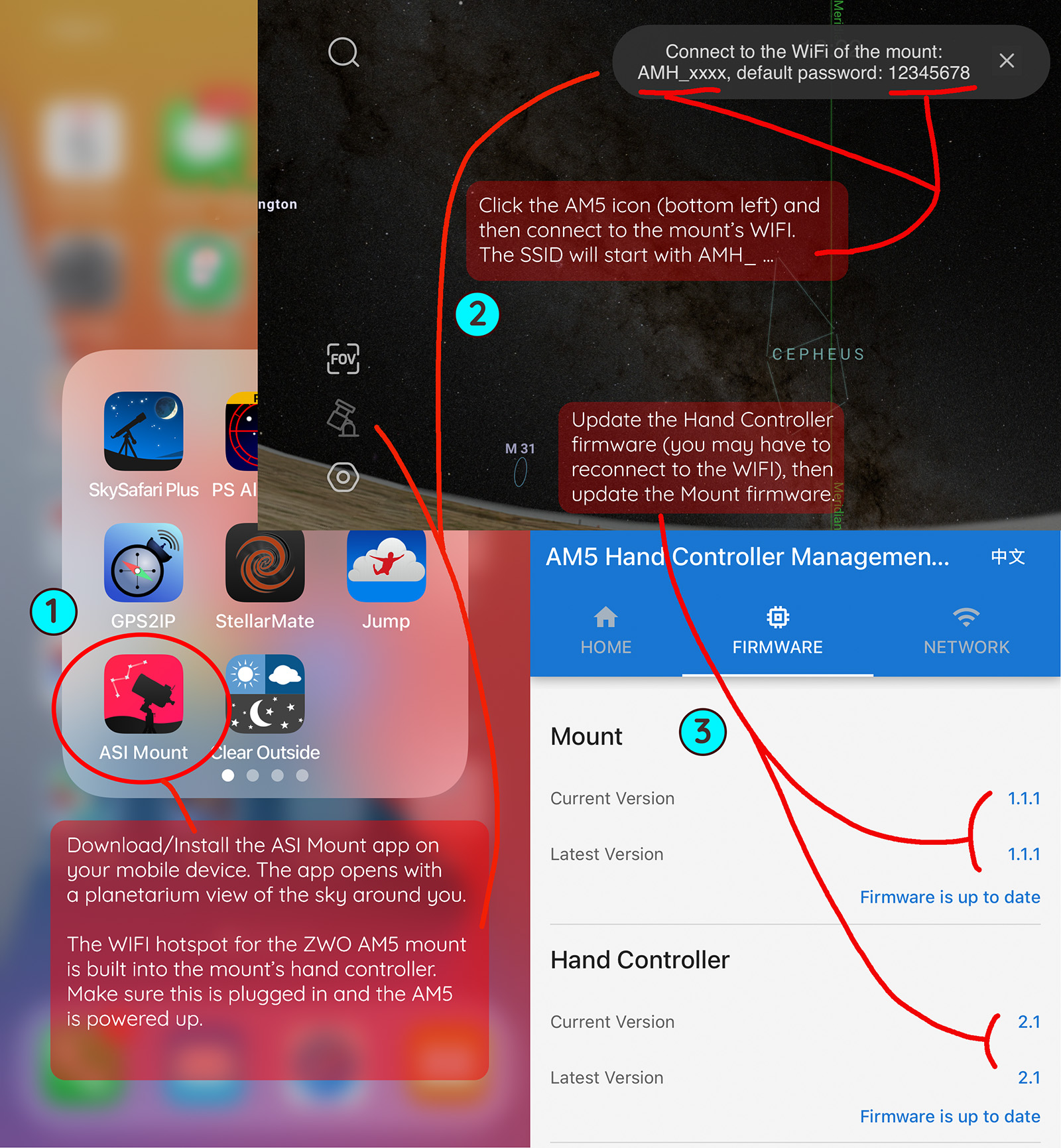
Posted August 5, 2022
Getting a new mount, a ZWO AM5
UPS just delivered my ZWO AM5 and I'm going to start on a list of tests and things I'm curious about. I know guiding is a clear one, and definitely going to run some guide tests, but what else? Here are four things I'm going to do. Anyone planning a long astro trip, or thinking about doing interesting things—even crazy things—with their AM5? Anyone building a micro-observatory? This seems like the perfect mount for it.
Adaptability
One of the first things I wanted to verify is the iOptron CEM/ZQ Tri-Pier Adapter with the ZWO AM5 mount. Looks good. (see the pic, bottom right). Over the years I have moved to one standard mounting point for my tripods and piers. I have a heavy-duty tripod, a small test pier ("winter pier") right off the back deck and my big pier about 30 meters from the house, in the backyard, and each has a 6 x 8 inch (152 x 203mm) mounting plate, drilled to accept four clamping crews. I have an aluminum plate on the mount side, and for the EQ6R-Pro and Orion Atlas I drilled and tapped holes to attach an iOptron Tri-Pier Adapter (#8036-TK), and for the CEM25p I used the #8036-25 Adapter. The CEM25p and the ZWO AM5 both use a standard 3/8 inch center mounting bolt, making this easy. No new adapters to build, and the new mount will fit with the big tripod and both piers. (I also have the ZWO TC40 Carbon Fiber Tripod for travel and I won't use the mounting plate). https://www.ioptron.com/product-p/8036.htm
Portability
I see a lot of ZWO AM5 owners focusing on large scopes and OTAs, how the mount handles a C925 or large refractor. I find this interesting, but my focus is entirely different, or maybe just narrower? I already have a mount for my larger scopes, the RC and 8" Newt. Portability is my top priority for the AM5, and the largest scope I will probably ever use with the AM5 is my William Optics GT81. My SpaceCat 51 is the main scope I plan to pair with the AM5 and TC40 Carbon Fiber tripod. One of the first things I want to accomplish is to get a full astro setup in one backpack or bag. I may have to do some camera backpack shopping.
Compatibility
I will be doing full imaging runs with NINA/ASCOM on Windows and Ekos/KStars/INDI on Linux. Although I have used a bunch of different astrophotography sequence and capture tools over the years, I seem to have settled on NINA and Ekos as the two that get the job done. Both are heavily supported, and they have a similar feature set--at least everything I need: polar alignment, sequencing, framing, full astro device support, multi-star guiding, and more. I don't have plans to buy an ASIAIR, but I totally appreciate the ingenuity that went into the design, I mean one tiny red aluminum box for everything, device management, imaging, power distribution, dew control, all driven through a phone or tablet app, that's genius, especially for a portable rig.
Non-Meridian-Flipability
Since balance is less of a concern with strain-wave gear mounts I want to try moving the scope forward, making it front-heavy, to the point where the camera and cables at the back clear the mount base at any rotation, effectively removing the need for a meridian flip. Has anyone tried this? I just ordered the Apertura Losmandy 14" Dovetail Plate from Highpoint, and the plan is to swap out the stock William Optics Vixen dovetail. We'll see if this works. The only downside I see is it will make changing cameras on the SpaceCat 51 more of a task because the EFW won't clear the longer dovetail plate. https://www.highpointscientific.com/apertura-essentials-losmandy-d-style-14-inch-universal-dovetail-plate-dup14
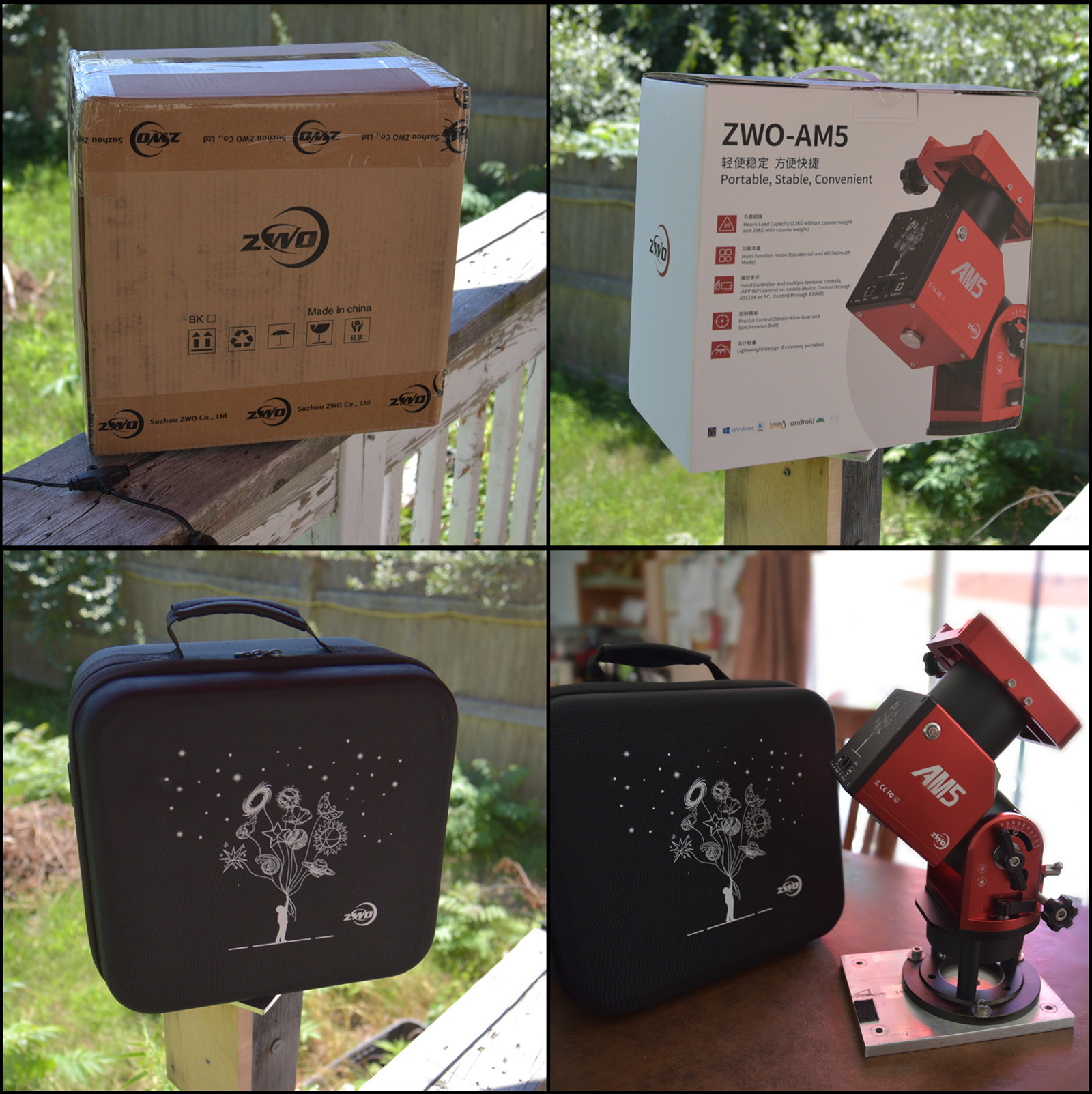


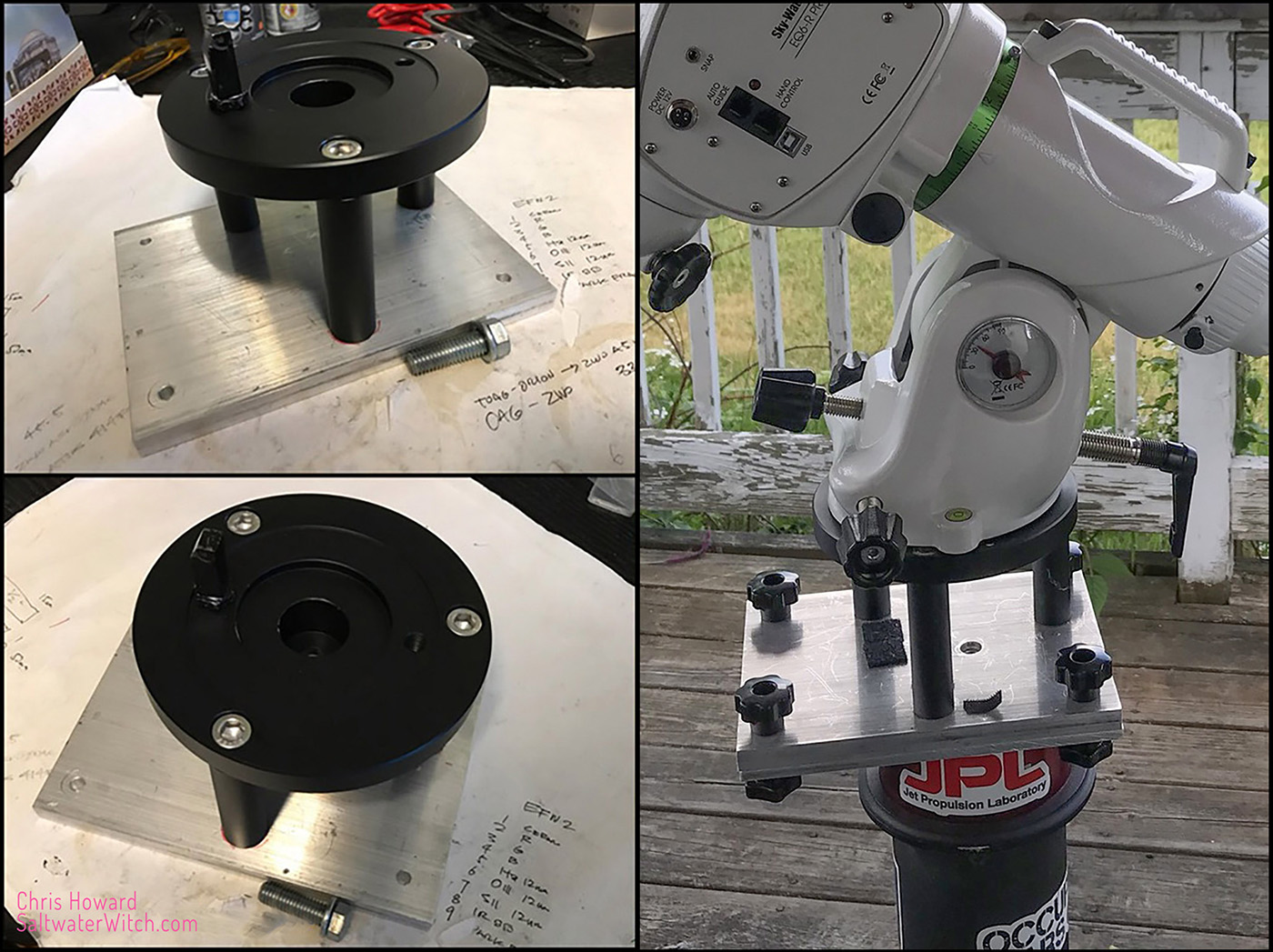
Posted July 30, 2022
Essential Tools & Products for Astrophotographers
I'm going to start a series of posts on this topic--"essential tools" to showcase a batch of tools, components, and other products and items I use to make this whole astrophotography journey easier. The first three are must-haves in my book--links below.
 1. Slip joint pliers with plastic inserts, designed for jewelry making I think. These come in handy when you need to tighten down the knurled metal screws for guide camera rings, or holding the guide cam shoe, or for tightening the tensioner on a rotator. These might work in cases where you want to tighten something just a bit more than you can with your fingers. But you also don't want to scratch the metal, paint, or plastic of whatever you're tightening. Just be careful because these are still regular pliers and you don't want to break anything.
1. Slip joint pliers with plastic inserts, designed for jewelry making I think. These come in handy when you need to tighten down the knurled metal screws for guide camera rings, or holding the guide cam shoe, or for tightening the tensioner on a rotator. These might work in cases where you want to tighten something just a bit more than you can with your fingers. But you also don't want to scratch the metal, paint, or plastic of whatever you're tightening. Just be careful because these are still regular pliers and you don't want to break anything.
2. I use nitrile gloves every time I'm changing filters, adjusting spacers or the OAG, and doing just about anything with my cameras. That's an obvious use, but I use these instead of the ring clamp tools I usually see as "must haves". I use these when I need to remove filters and spacers that are stuck, and the gloves allow you to unstick these without applying a lot of pressure, without squeezing one side of a spacer so much that the adjacent sides bow out and make it worse. They're even grippy enough to unstick those pesky super-slim M42 to M48 spacers.
3. Real gaffer tape, the expensive cloth stuff that will hold things down but won't leave any residue. Get the real thing, not the cheap stuff. I use this to hold cables together, to tape cables to the mount or the side of a camera. It's as permanent as you want it to be, holding whatever you need to hold until it's time to tear down your gear. Then it just peels away, and you can reuse it.
Non-marring Plastic Jaw Soft Touch Pliers
https://www.amazon.com/dp/B000ALF5EK
Nitrile Gloves
https://www.amazon.com/dp/B00GS8VGP6
Gaffer Tape
https://www.amazon.com/dp/B00ZRYP38I
Posted June 19, 2022
Kase Clip-in Light Pollution Filter for the Sony A7s
I couldn't find the spectrum graph data specifically for the Kase Light Pollution/Neutral Night filter, but I believe it is similar to the dozen of others on the market created for the same purpose—to reduce a range of wavelengths in the yellow and greens.

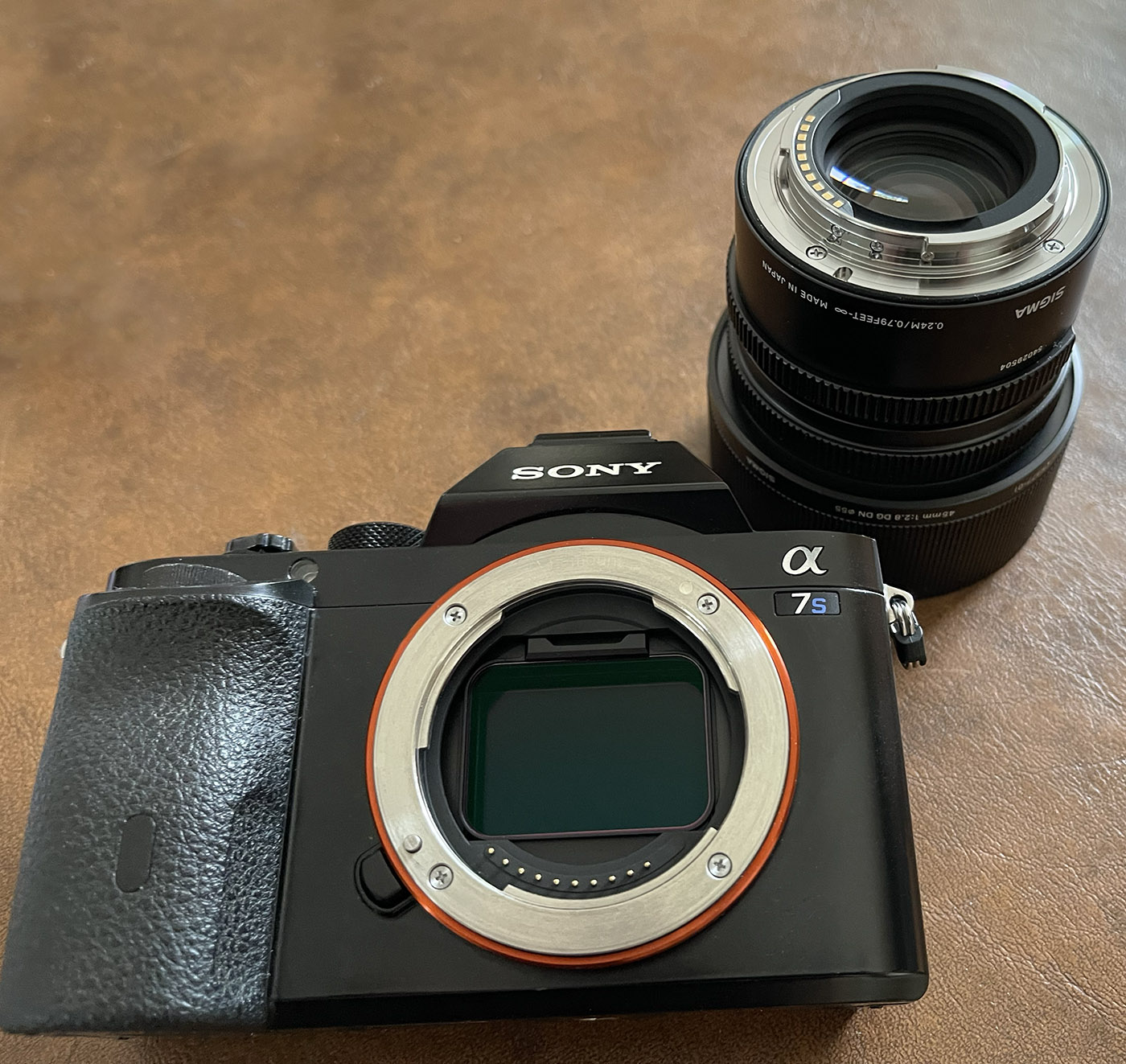

Posted June 3, 2022
ZWO EFW Update
I swapped the 6nm Astronomik OIII filter for the 3nm Antlia Pro. Now I need some clear night skies to try it out!
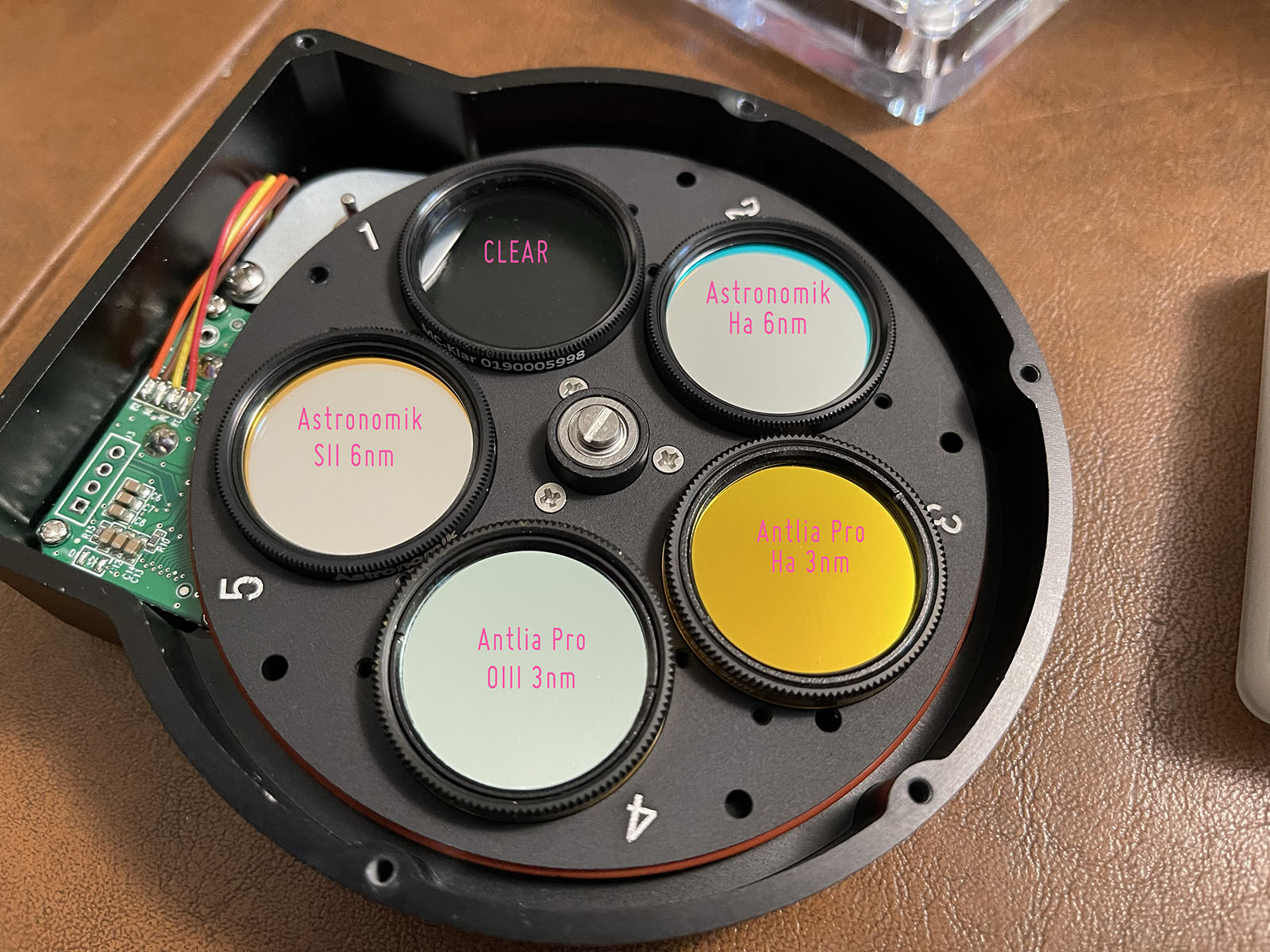
Posted May 24, 2022
Simple Flat Frame Sleeve for the SpaceCat51
I've been thinking about portability for my astro setups, and low-power goes along with that. I have a light I use for flat frames, which will cover every scope I have, from the William Optics SpaceCat to the 8-inch Newt. But I also don't mind taking sky flats with a t-shirt or a couple pieces of paper. And these don't use any power.
Here's the scenario: The sun is setting and you've already setup your gear. You're sitting around waiting for the night to arrive. What else are you going to do but spend a little time taking calibration frames, flats when it's still a bit bright out, and dark flats, dark frames, and bias frames as the twilight fades—and if any of those are needed.
That's the idea anyway.
I spent a couple minutes in TinkerCad making a Flat Frame Sleeve for the SpaceCat I can print—inside diameter is 83mm. I ordered some 3 1/2 inch diameter, 1/8in thick "White Acrylic Round" things (Link below). I glued one of the acrylic circles to one side, and placed three pieces of adhesive-backed loop-side velcro strips inside the sleeve to make it fit snuggly on the end of the SpaceCat dew shield. ("loop side" is the soft side). Gluing: I used a Q-tip to put a thin coat of E6000 glue on one side of the printed sleeve and then pressed down the acrylic disc and let it dry overnight.
I've used this sleeve with the Flats Wizard in N.I.N.A. twice and it works well. Give it a try. Let me know what you think!
RedCat 5 Flat Sleeve Model - (Shared/Public) Tinkercad: https://www.tinkercad.com/things/47bakxyG37l
20PCS White Acrylic Round Circle, White Acrylic Rounds: https://www.amazon.com/dp/B081YHZGRL
E6000 Craft Adhesive: https://www.amazon.com/dp/B007TSYNG8


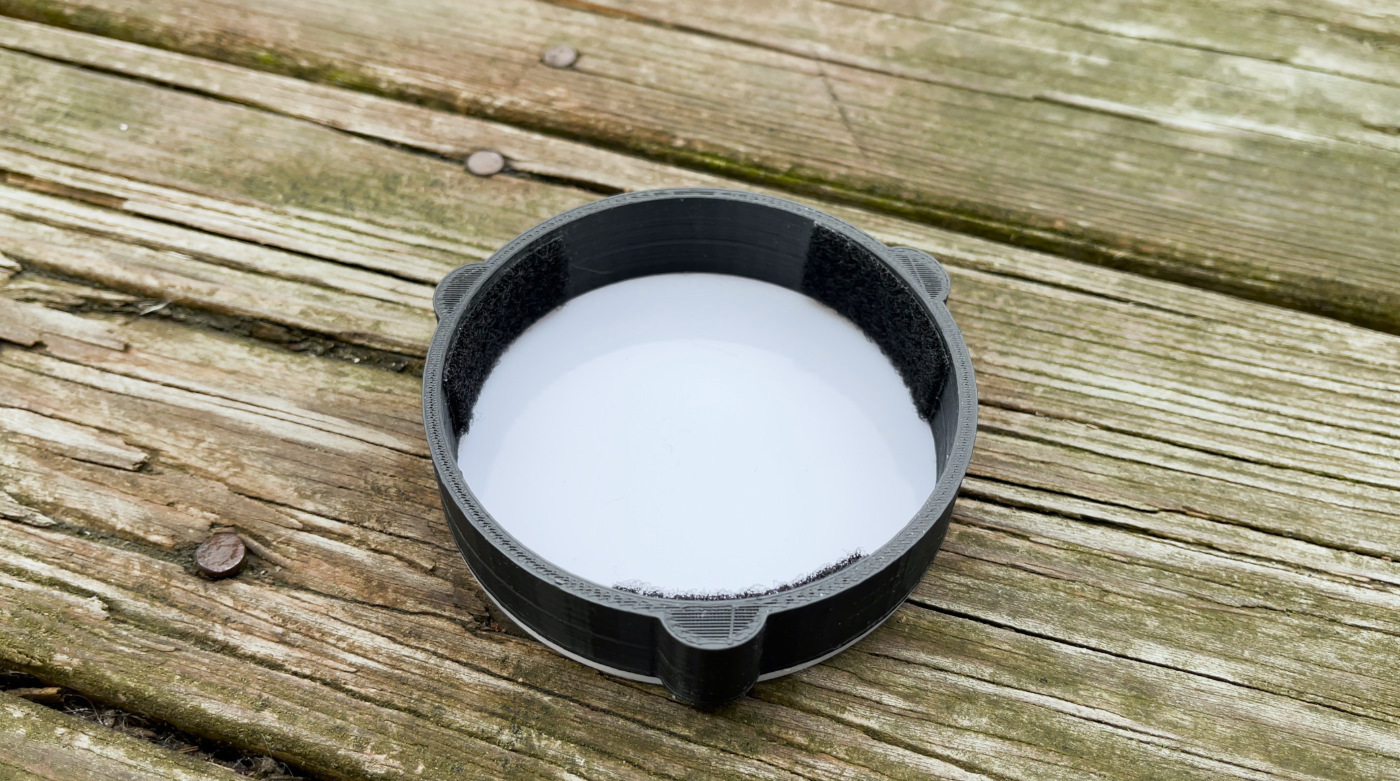

Posted May 16, 2022
I bought an old camera!
I bought an old Sony A7s because it's a full frame camera with 8.4 micron pixels, and because it's the smallest full frame camera I've ever seen. Also because at the 1350mm focal length of the Astro-Tech AT6RC with the .8x field flattener, I'll end up with 1.6"/pixel resolution, which is damn near perfect for my skies. So, do I care about the "star eater" problem? Not that much. The nebula-imager in me is saying "Thanks, Sony. Can you make it eat all the stars? I hate lots of one-pixel stars more than I hate a full moon". But from the person who actually has to spend $700 USD, I'll see how it goes. For now I'm not going to worry about it—just going to try to take some cool shots. I may have this camera modified to let in more at the red end of the spectrum. Time will tell if my decision to buy a seven year old camera was right, but for now, it's definitely fun to use—and did I mention it's full frame?
Seriously, what about the Sony "Star Eater" issue? As I understand it, the general problem is the Sony line of A7 and A9 mirrorless cameras can confuse hot pixels with undersampled stars, i.e., stars that resolve to 1 pixel or less (and less means they will always resolve to one pixel). I think the reason this hasn't been fully corrected in firmware is because it can't--the hot pixel correction happens at read-out time. It's built into the sensor read functions that also handle read noise, shot noise, fixed pattern noise. That's my guess. Not certain about that. Anyway, with clear skies and great seeing, the typical resolution recommendation is 1 to 2 arcseconds per pixel. If your system (camera + scope) has a resolution higher than 4 or 5 arcseconds/pixel (undersampled) then a lot of the stars in the sky will appear as single white pixels or a small blocky group of pixels—and I'm guessing some of these look like hot pixels to the read function. If you go below 1 arcsecond/pixel in resolution then you're oversampling and stars can appear bloated and soft, covering several pixels. So, it seems that the closer you can get to 1-2 arcseconds/pixel the better your chances of avoiding the "Star Eater" issue. Maybe? For details: https://www.lonelyspeck.com/sony-star-eater-and-how-to-fix-it. Another good article here: http://www.markshelley.co.uk/Astronomy/SonyA7S/sonystareater.html

Posted May 12, 2022
William Optics GT81 Apochromatic Refractor - then and now

My William Optics GT81 Apochromatic triplet refractor, the day it arrived (left) and today (right)--that's an FPL-53 front element, 81mm aperture, 478mm focal length, 382mm at f/4.7 with the field flattener. I've been capturing the beautiful night sky with this awesome piece of hardware for nearly seven years. I bought it August 2015 and here we are in May 2022. I have captured hundreds of nebulae, galaxies, supernova remnants, and various phases of our moon. Over the last seven years I've captured the distant light of stars and emission nebulae in thousands of one, two, five, and ten-minute sub-exposures. Here's to seven more. Thank you, William Optics!

